
Image above: Statue of George Washington Carver at his boyhood home and now National Monument, Diamond, Missouri, 2020, Carol M. Highsmith. Courtesy Library of Congress.
Spotlight on Lesser Known History
George Washington Carver NM, Missouri
America's Best History Spotlight
On this page we're going to Spotlight the lesser known historic sites and attractions that dot the history landscape across the USA and are worth a visit if you're in their area. And while they may be lesser known, some are very unique, and will be that rare find. You'll be, at times, on the ground floor, or maybe even know something others don't. It'll be fun. Visit them.
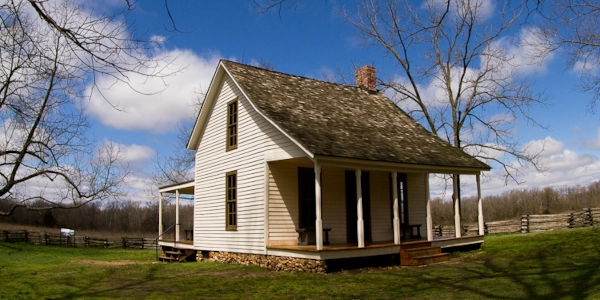
George Washington Carver National Monument, Missouri
If you want to know how valuable George Washington Carver was to Black History in America, many facts stand out. An outstanding educator at Tuskegee, a master planter who invented many techniques to help rural farmers, and the fact that the national monument dedicated in 1943 to his boyhood home was the first national monument to honor a black American, or non-President, in history. The site is replete with artifacts of his entire life, but the historic trail that takes you from the Visitor Center to sites such as the original Carver cabin footprint, where George Washington Carver was born, to the 1881 structure built by Mason Carver after George had left home, to the awesome statue of him as a boy, and to the nature that nurtered his passion for plants and how to grow them. Image above: Home of Mason Carver, still on site, built 1881, 2011. Courtesy National Park Service.
Sponsor this page for $100 per year. Your banner or text ad can fill the space above.
Click here to Sponsor the page and how to reserve your ad.
Info, What's There Now, History Nearby
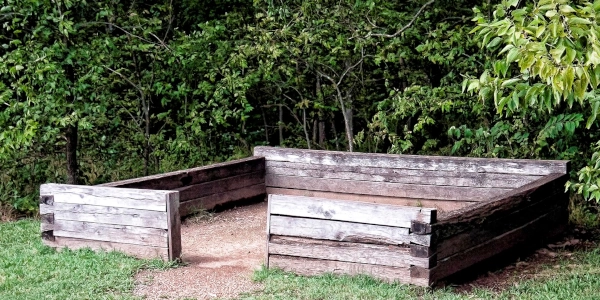
George Washington Carver NM, Missouri
It would have been hard to believe from the modest upbringing on this Missouri farm that Carver, inspired by his surroundings, would lead to the next level of farming techniques and plant technology while teaching at Tuskegee. But it did. Despite born into slavery, despite capture as a boy, despite circumstances that would have stopped many men. But Carver, aways interest in education, was convinced that his curiousity would lead to formal education, and then a career in scientific research and teaching as well. This humble farm was its beginning, ... yes hardscrabble and hard to accept in its slavery context, but part of a history that Carver used to his advantage.
Image above: Cabin footprint of the original home of Moses and Susan Carver, approximately 14 feet square, where George Washington Carver was born. Courtesy National Park Service. Below: George Washington Carver, seated first row center, and Tuskegee Institute staff, 1902, Francis Benjamin Johnston. Courtesy Library of Congress.

Where Is It
George Washington Carver National Monument is located in Diamond, Missouri, southwest of Joplin. The address is 5646 Carver Road, Diamond, Missouri, 64840. Diamond is located south off Interstate 44, Exit 18A.
What is There Now
George Washington Carver National Monument
The Visitor Center with film, museum, classroom to learn of Carver's life and studies, orientation, bookstore, and observation deck. A trail circulates around the 240 acre park to site such as the original footprint of the Carver home, the 1881 Moses Carver home, the Carver Bust, Carver Cemetery, the Boy Carver statue, as well as boardwalks and vistas of the Missouri prairie that inspired Carver. There is a picnic area and plenty of parking. Most days there are two guided tours of the sites on the Carver trail.
When Open and How Much
The George Washington Carver National Monument is open daily, except for major holidays. There is no admission charge.
Fees subject to change.
Websites
George Washington Carver National Monument
History Nearby
It's Missouri, so whichever direction you've come from or wish to go, there is so much to consider for your next site to visit. There's St. Louis, gateway to the west, or following some of the Pony Express Trail or the Santa Fe Trail or the Oregon Trail or the Lewis and Clark Trail, or if you'd like to sight a battlefield, try Wilson's Creek.
-
St. Louis Gateway
-
Santa Fe Trail
-
Fort Osage
-
Arrow Rock
-
Wilson's Creek
-
Ozark National
Scenic Riverways
Buy Chronology

Great Book for the History Fan with Fifty Short Essays Telling the Story of American History.
Photos, History, and More Spotlights
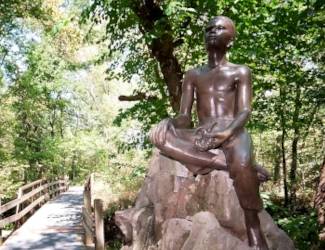
Upbringing
Moses, a German-American immigrant, and Susan Carver moved to southwest Missouri and built the small 14 foot by 14 foot cabin whose footprint still stands. In 1855, they purchased a slave named Mary and her eventual husband Giles for $700, who lived in the same cabin. She would birth George Washington Carver in that cabin, circa 1864, while slavery was still legal in Missouri. Before he was one week old, George, his sister, and mother were kidnapped by night raiders from Arkansas, then sold in Kentucky. A hired man found George, but not his sister or mother. George Washington Carver, as well as his brother James, were then raised, out of slavery, by the Moses family.
He was encouraged by the Carver's to pursue education, even though black children were not allowed in Diamond's schools. He would travel ten miles to school, renting a room, and was taught by Mariah Watkins. Her words to him stood out, "You must learn all you can, then go back out into the world and give your learning back to the people."
After being denied college admission, Carver worked a seventeen acre farm, then eventually became the first black student at today's Iowa State, then known as Iowa State Agricultural College, where he studied botany.
Photo above: Statue of George Washington Carver, sculpted by Robert Anendola in 1961, as a boy along the National Monument's Carver Trail. Courtesy National Park Service.

Carver as Plant Doctor and Teacher
Carver was so respected as a student at Iowa State that he was chosen to pursue his Master's Degree, and participate in the Iowa Experiment Station. Notoriety for his work there began to spread to other educators. One, Booker T. Washington, knew of his work at teaching at Iowa State, as the first black professor.
In 1896, Booker T. Washington invited him to head the agriculture department at the Tuskegee Institute. Carver would teach there for forty-seven years and pursue scientific advances in farming, including peanuts, of which he is most noted, although that was only part os his agricultural pursuits.
Photo above: George Washington Carver in the fields around the Tuskegee Institute, 1906, Francis Benjamin Johnston. Courtesy Library of Congress.
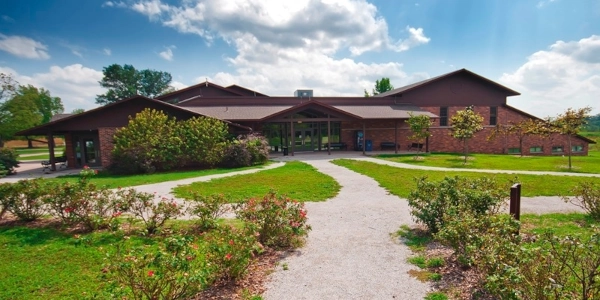
National Monument and Preservation
The national monument was dedicated on July 14, 1943, by Franklin Delano Roosevelt. It was the first dedicated to a black man and first to a non-president. The visitor includes a model classroom built like that Carver taught at while at Tuskegee.
Photo above: Visitor Center at the George Washington Carver National Monument, 2011. Courtesy National Park Service. Below: The 1881 Mason Carver House, date unknown, Historic American Buildings Survey. Courtesy Library of Congress.
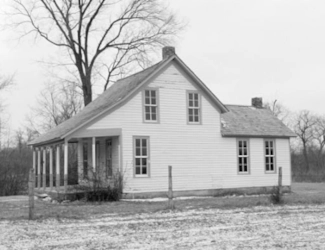

T-Shirts and Gifts from the official souvenirs of Americasbesthistory.com.
About
America's Best History where we take a look at the timeline of American History and the historic sites and national parks that hold that history within their lands.
Photos courtesy of the Library of Congress, National Archives, National Park Service, americasbesthistory.com and its licensors.
- Contact Us
- About
- © 2025 Americasbesthistory.com.
Template by w3layouts.


